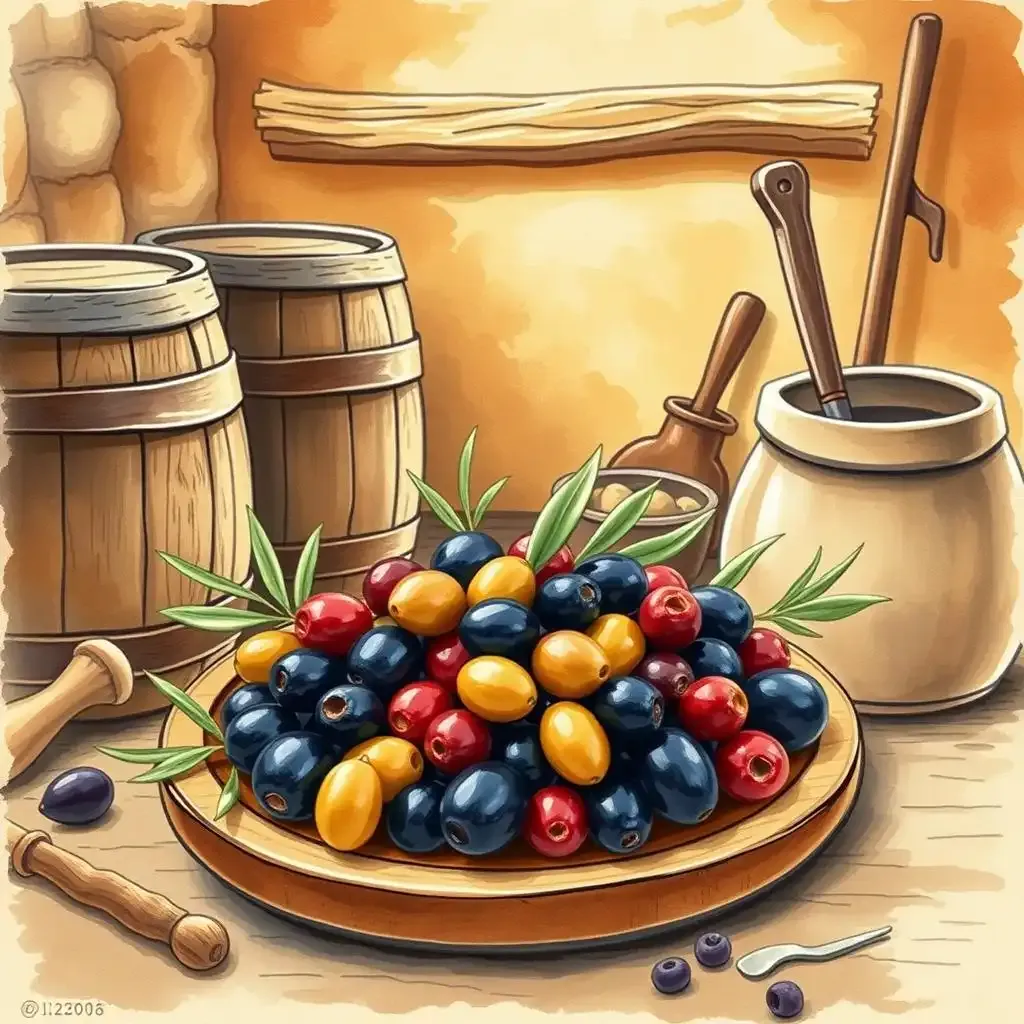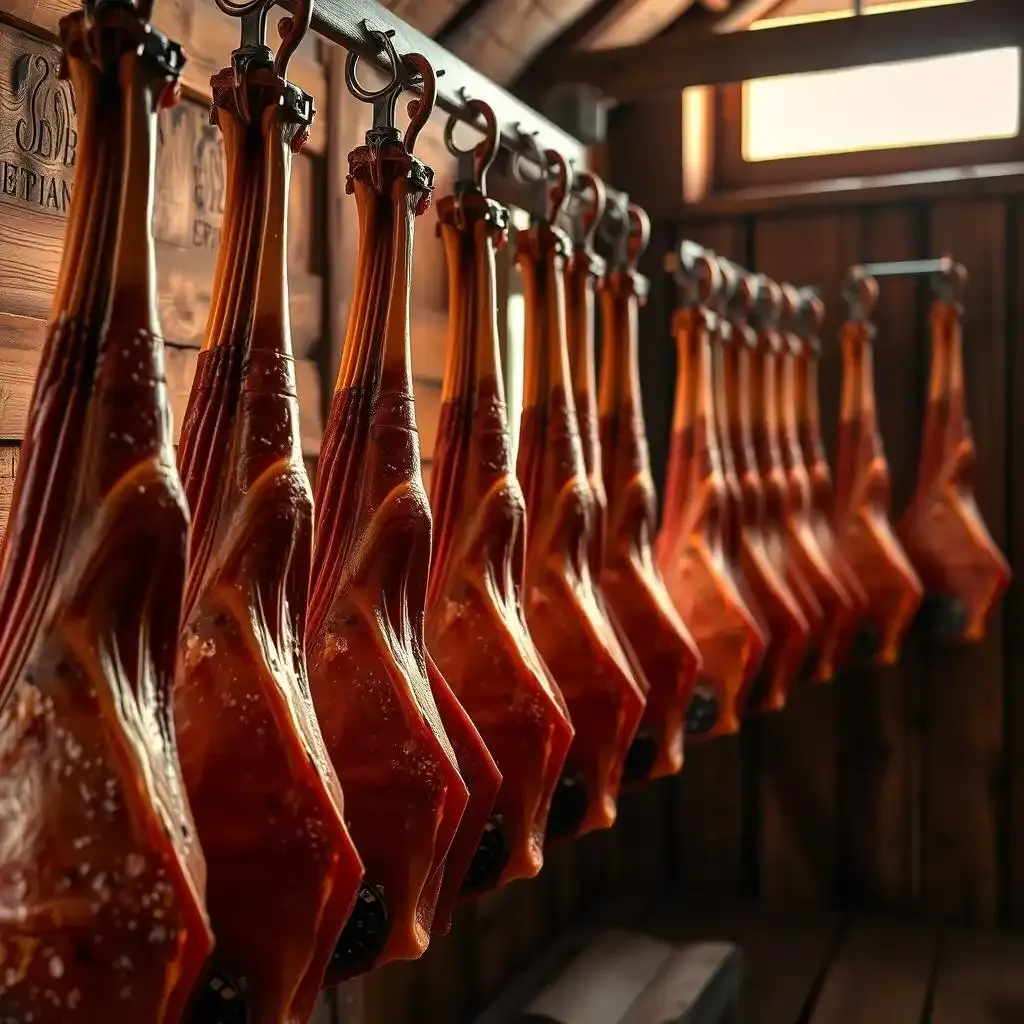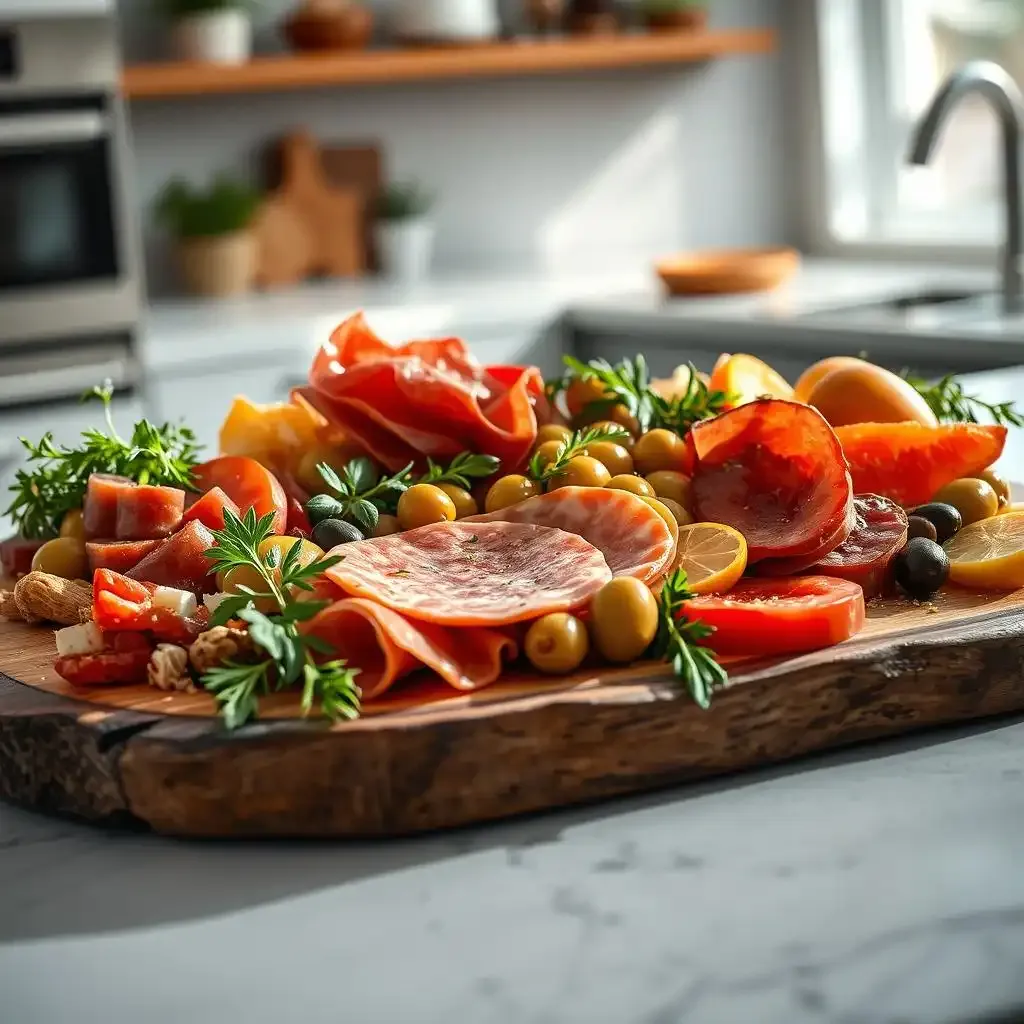Table of Contents
Have you ever wondered how the tangy taste of cured olives or the rich flavor of Spanish ham comes to life? These culinary delights are the result of centuries-old Mediterranean curing techniques that have been perfected over generations. Rooted in tradition and shaped by the region's climate, these methods are not just about preserving food; they're about transforming it into something extraordinary. Join us as we explore into the fascinating world of Mediterranean curing, exploring the history, the art, and the impact on modern cuisine. By the end of this trip, you'll see why these techniques are more than just a food production process—they're a celebration of culture and heritage.
cuisine inspiration | cured olives and ham |
|---|---|
key techniques | brine, water, dry curing; temperature & humidity control |
prominent varieties | kalamata, nyons, cerignola, spanish ham |
cultural impact | preserving heritage, shaping global culinary trends |
1. The History and Cultural Significance of Mediterranean Curing Techniques

1 The History And Cultural Significance Of Mediterranean Curing Techniques
Curing has been a cornerstone of Mediterranean cuisine for centuries, serving as a vital method to preserve food and enhance flavors. Originating in ancient civilizations like Rome and Greece, these techniques were essential for survival, allowing people to enjoy their harvests year-round. Curing not only helped in preserving food but also became a part of cultural identity, shaping the unique tastes and traditions of the Mediterranean region.
Did you know that olives are not naturally sweet? They start life as bitter and inedible. Through methods like brine soaking, water curing, and dry curing, these olives transform into the flavorful treats we love today. Each region has its specialty, much like how different areas have their own unique recipes. For example, Kalamata olives from Greece are known for their rich flavor, while olives from Nyons in France offer a distinct tanginess.
Region | Famous Olive Variety | Curing Method |
|---|---|---|
Greece | Kalamata | Brine Curing |
France | Nyons | Water Curing |
Traditionally, curing was a communal effort, bringing families and communities together. It was a process rooted in history, passed down through generations, much like how we pass down family recipes today. This shared activity contributed to the region's rich cultural combination, making food a central element of their social fabric.
Interestingly, these age-old curing techniques have not only stood the test of time but have also influenced modern cuisine. Chefs around the world draw inspiration from these methods, blending tradition with innovation. It's like taking a classic storyline and giving it a fresh twist—timeless yet new!
Next time you enjoy a dish featuring cured olives or ham, take a moment to appreciate the legacy behind it. Each bite is a story of tradition, craftsmanship, and cultural accomplishment. The Mediterranean's curing techniques are more than just methods; they're a celebration of history and heritage, much like how a story keeps getting better with each retelling.
and uncover the timeless charm of Mediterranean cooking.
2. The Art of Curing Olives: Methods and Varieties
Alright, let's investigate into the fascinating world of curing olives! It's like turning a tough, bitter little fruit into a salty, savory gem that elevates any dish. Curing olives is an art that's been perfected over centuries, and it's way more than just a magic trick. It's a process that transforms something ordinary into something extraordinary, much like how you turn a blank canvas into a masterpiece.
When I first learned about curing olives, it reminded me of making a smoothie—except instead of blending, you're letting time and salt work their magic. The key here is patience. You can't rush it, but trust me, the payoff is worth the wait. Whether you're using brine, water, or dry curing, each method has its own charm and results in a unique flavor profile. It's like having different brushes in your paintbox, each creating a different stroke.
Method | Process | Flavor Profile |
|---|---|---|
Brine Curing | Mixing salt and water to create a brine solution | Rich, salty |
Water Curing | Rinsing olives in fresh water repeatedly | Subtle, delicate |
Dry Curing | 层叠 salt layer by layer to draw out bitterness | Sharp, intense |
Beyond the methods, it's the varieties of olives that make this world so exciting. Think about a big family reunion where everyone has their own quirks—some are loud, some are shy, and others are just plain interesting. Similarly, olives come in all shapes, sizes, and flavors. There's the Kalamata olive, known for its rich, plump texture, and the slender, tangy Picholine. Each has its own personality, and they all deserve a spot in your culinary arsenal.
As someone who loves experimenting in the kitchen, I've found that cured olives are like the chameleon of ingredients. They can adapt to any dish, from a simple snack to a fancy tapenade (check out our olive tapenade recipe for a taste of magic). The best part? You don't need a high-tech kitchen to master this. All you need is a bit of time, salt, and some detective skills to figure out what works best for your taste buds. It's a progression that's as rewarding as it is delicious!
3. Curing Techniques in Spanish Ham: A Time-Honored Tradition

3 Curing Techniques In Spanish Ham A Time Honored Tradition
From Pig to Palate: The Progression of Spanish Ham
Alright, let's talk ham! When I first set out to understand the magic behind Spanish ham, I felt like I was uncovering an ancient secret. Spanish ham, or Jamón, isn’t just meat—it’s a labor of love that takes months, sometimes even years, to perfect. It’s like a slow-motion culinary symphony, where every step matters and patience is key.
Did you know that the ham you see in markets starts its life as a happy pig in the rolling hills of Spain? These pigs are no ordinary pigs—they’re the Iberian pig, known for their fatty, marbled meat, which is perfect for curing. Think of them as the rock stars of the pig world!
The Art of Salting
Let’s get hands-on. The curing process begins with salting, a step so crucial it’s like giving the ham a superhero suit. Here’s the lowdown:
- Initial Salting: The meat is covered in a thick layer of salt to draw out moisture and start breaking down the proteins. Visualize it like sprinkling magical seasoning to reveal the ham’s true potential.
- Post-Salting Rest: The ham rests in a cool, dry place for several weeks. This is where the magic happens—enzymes go to work, transforming the meat into something extraordinary. It’s like letting dough rise; without this step, you’d be missing out on all that flavor.
If you’re into the nitty-gritty details, check out our guide to fancy French cuisine for more insights on how tradition shapes flavors. Trust me, it’s a wild ride!
Region | Type of Ham | Average Curing Time |
|---|---|---|
Teruel | Teruel-style Ham | 12-18 months |
Trévelez | Sierra Nevada Ham | 18-24 months |
Guijuelo | León-style Ham | 10-14 months |
Time, Temperature, and Humidity: The Recipe for Perfection
Once the initial salting phase is done, the ham enters a drying room, or secadero. This is where the environment becomes the unsung hero of the curing process. The room’s temperature and humidity are carefully controlled to ensure the ham dries just right without getting too salty or tough.
Think of it like baking cookies—in the oven, every slight change in temperature and time affects how your cookies turn out. It’s the same with ham. Walk into a ham drying room, and you’ll see rows of hams hanging, slowly maturing like fine wine. It’s a sight that makes you wonder, “How did humans figure this out centuries ago?”
The Final Stretch: Maturation
After drying, the ham is moved to cellars for final maturation. Here, it rests in silence, the flavors deepening like a good book you don’t want to finish. The longer it ages, the more complex its flavor becomes. It’s like watching a actor refine their performance over time—each slice tells a story.
For a crash course in the science behind curing, check out our post on French anchovy dip. Trust me, the link between fish and ham is more than you think!
- Temperature: Typically kept between 10-16°C to slow the curing process and allow flavors to develop.
- Humidity: Around 60-80% to prevent the ham from drying out too quickly.
- Aging: Ham can age for a minimum of 12 months, but some varieties mature for 3-4 years, turning into liquid gold!
4. The Influence of Mediterranean Curing on Modern Cuisine

4 The Influence Of Mediterranean Curing On Modern Cuisine
so after diving deep into the history and art of Mediterranean curing, let’s talk about how these ancient techniques are still relevant today, totally changing how chefs create modern dishes. It’s like taking a time-tested recipe and giving it a fresh twist to fit today’s tastes.
Modern Takes on Classic Flavors
Deli Ham and cured olives are like the rock stars of Mediterranean cuisine, and chefs today use them in creative ways that would blow your mind. Take tapenade, for instance—it’s like supercharged olive paste drizzled over toast or veggies. Or cured ham slices paired with fruits like melon or figs—it’s like a flavor explosion that feels fancy but totally doable at home.
Why stop there? Chefs are now experimenting with new combinations, like blending cured olives into sauces or using them as a topping for meat dishes. Think of it like mixing your favorite crayons to create a completely new color—it’s exciting and totally unexpected.
Traditional Dish | Modern Twist | What’s Changed? |
|---|---|---|
Tapenade | Olive & Avocado Spread | Adds creaminess and a modern touch |
Cured Ham | Fused with Cheeses | Creates layered, complex flavors |
Want to see cured olives shine? Check out our
Inspiring Chefs and Home Cooks Alike
has some inspiration to get you started!
embracing the legacy of mediterranean curing
Mediterranean curing techniques are more than just methods for preserving food; they are a testament to the region's rich history and cultural ingenuity. From the briny cure of olives to the slow maturation of Spanish ham, these techniques offer a window into the past while continuing to shape modern cuisine. As you savor the next olive or slice of cured ham, remember the centuries of tradition and craftsmanship that make these flavors possible. The legacy of Mediterranean curing lives on, inviting us to appreciate the art and science of preserving taste for generations to come.